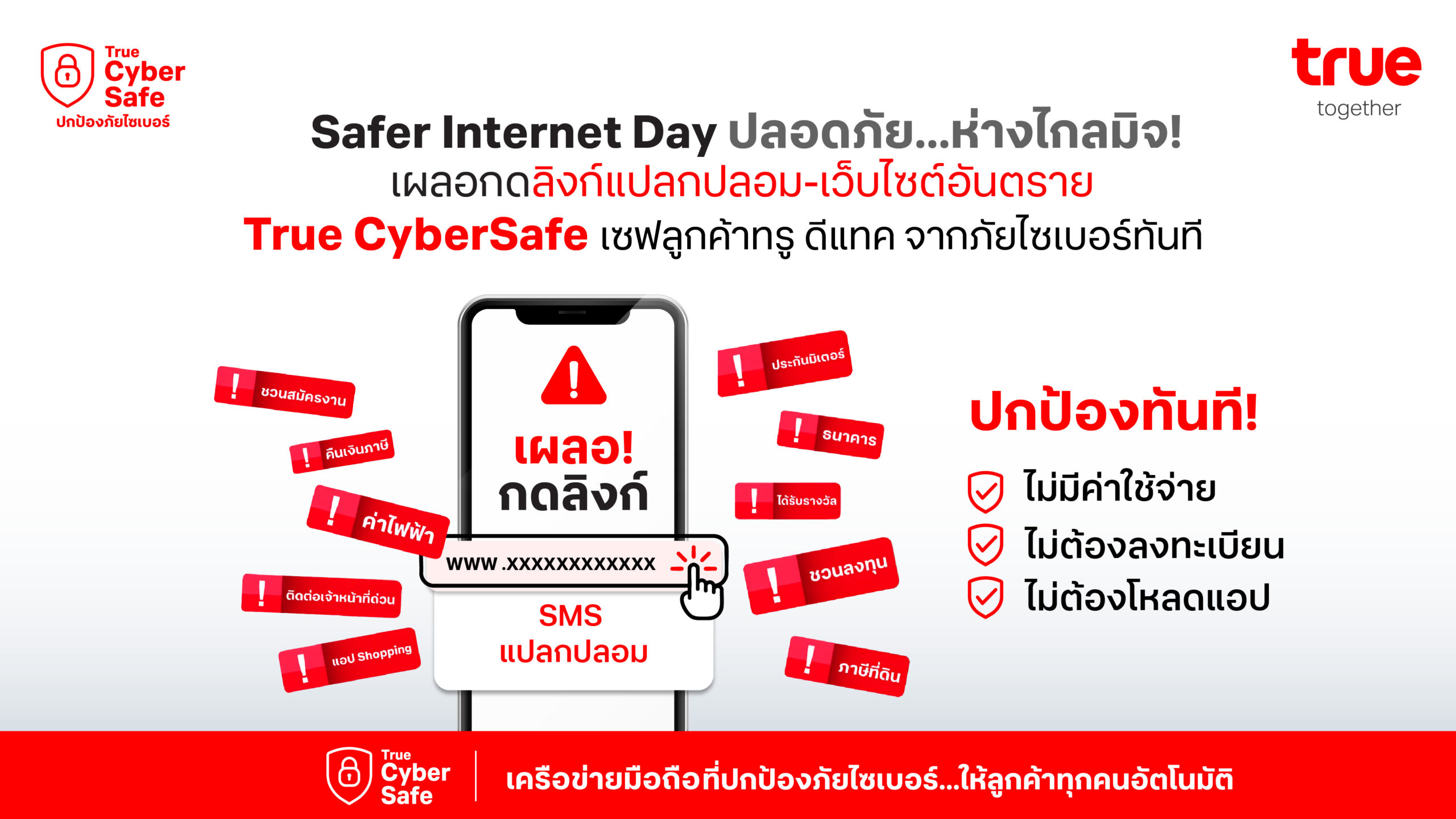This article is part of the “Guardians of Good” series, which celebrates the people who ensure True Corporation’s commitment to sustainability. As of December 8, 2023, True Corporation achieved the highest CSA score out of 166 companies assessed in the telecommunications Industry in the S&P Global Corporate Sustainability Assessment and was listed in the DJSI indices for the sixth year in a row. Find out more here.
Thailand is undergoing an unprecedented transformation of its mobile networks. With the amalgamation of dtac and True into True Corporation, ten of thousands of network sites are being modernized to ensure the best possible network experience and a smaller environmental footprint.
This can be dangerous work unless technicians adhere to strict safety standards. Mobile connectivity relies on antennas attached to steel towers that can be over 100 meters in height—or attached to buildings that are even higher. The challenge thus lies in balancing the pace of work with the safety of the network teams.
To understand how True Corporation aims to support the human rights of its employees, and particularly their right to come home safe from work, True Blog spoke to Witsarut Prayoonkham, the Head of the Health Safety Security & Supply Chain Sustainability Department (HSS&SCS) at True Corporation.

The Right to Safety
Witsarut highlighted that the telecom industry is labor-intensive, employing tens of thousands of people either directly under telecom operators or indirectly through their suppliers. Acknowledging its reliance on human labor, True Corporation places significant emphasis on various aspects of employee welfare, such as work safety and human rights. These labor practices form a cornerstone of business sustainability.

True Corporation’s labor guidelines classify staff into two groups: its own employees and those of business partners or suppliers. All employees hired directly by True Corporation must undergo work safety training. This involves reporting accidents via the True Connect platform and adhering to the “Stay TRUE to Safety” principles. T stands for “take a pause, safety first.” R is for “report immediately.” U is for “use the right equipment.” And E is for “Educate yourself.”
“If certain jobs need specific safety skills, True Corporation also provides additional safety training. For instance, drivers receive specialized road safety instruction,” Witsarut said.
For its vendors and business partners, True Corporation has established a safety management system through the Procurement Department. This system includes a risk review process to vet suppliers. The review ensures that the selected suppliers’ qualifications align with the company’s expectations in terms of economics, environment, reputation, and safety.
This classification reveals that 46 suppliers of True Corporation are currently in the “High Risk” group. Most of them in network operations and thus are exposed to various work-related hazards. Their staff, for example, could be at risk of falling from height or experiencing electrical shock. Additionally, they may face other labor rights violations, such as unfair employment contracts and unsuitable working conditions. Child labor may also be a concern. Therefore, the HSS&SCS at True Corporation closely monitors suppliers in this group.

Striving for Zero Fatalities
Discussing occupational health, Witsarut stated, “We are steadfast in our pursuit of zero fatalities and plan to extend our safety indicators to suppliers shortly. This step underscores our commitment to human rights and aligns our practices with international standards.”
Compared to the previous year, True Corporation has observed a decline in fatal accidents and lost-time accidents among suppliers, thanks to their adherence to the company’s safety guidelines. Nevertheless, unsafe acts and conditions were reported for improvement. For example, staff wore Personal Protective Equipment (PPE) incorrectly and worked dangerously close to low-voltage/high-voltage cables without implementing appropriate risk-reduction measures.
“Work hazards are often linked to safety management issues. In other words, supplier executives may lack a full understanding of the importance of a work safety culture. Consequently, their accident reporting and accident-cause analysis lack systematic approaches,” said Witsarut.
Recognizing this structural issue, True Corporation prompts its suppliers to enforce work safety measures seriously, with leadership safety awareness programs conducted for executives at all levels. Furthermore, suppliers will be urged to provide safety or work-guideline training for staff. They will also be expected to conduct audits and inspections to ensure their constructors adhere to safety guidelines.
Work hazards are often linked to safety management issues. In other words, supplier executives may lack a full understanding of the importance of a work safety culture. Consequently, their accident reporting and accident-cause analysis lack systematic approaches,

If any severe accident occurs and results in fatalities, especially during network-related work, it must be reported along with a proposed solution to the chief of technology by the relevant supplier’s executives, who must also monitor and evaluate the results of the solution’s implementation.
True Corporation will also ensure that work safety is given the highest priority, to the extent that safety performance is reported to the Board of Directors quarterly. The report will include the safety situation, progress, and evaluation results.
Safety Components
Having worked with many world-class companies in both Thailand and other Asia-Pacific countries, Witsarut is familiar with the risks typically faced by telecom firms. Companies in distribution, construction, installation, maintenance, networking device, and electrical appliances all face risks from their suppliers’ actions.
“There are two critical factors for good safety records. First, an organizational culture that promotes safety awareness at all levels, from directors and executives down to operational staff, as it effectively helps reduce risks and enhance work safety. Secondly, leaders’ consistent implementation of the safety policy,” Witsarut explained.

The goal is to achieve a proactive safety culture for True Corporation by 2025. Employees will be expected to report not only accidents but potentially unsafe conditions or acts—even those that did not cause an accident. To support this shift, the company will launch a dedicated platform to elevate safety awareness and culture to an even higher level.
“Health and Safety can be maintained if we implement both top-down and bottom-up approaches. In simple terms, we need to enforce the right policies and engage employees,” Witsarut concluded.




